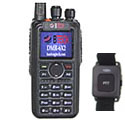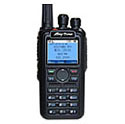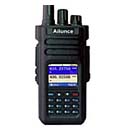|
Repeater Networks 1.01 John 'Miklor' K3NXU |
What's a DMR Repeater network
The object of this page is to assist with making you comfortable with the network and its terminology and definitions. Let's start with the various Talk Groups (TG).
Local Repeater (Local 9) (A)
Local Talk Group (TG) 9 is used to contact stations in your immediate area using a single stand alone repeater. No network connection is required. If your existing internet connection is lost, local 9 communications will still remain in play.
It also temporarily removes your repeater from the network chain to free up time slots on the other networked repeaters.
Local Network (Local 2) (B)
Although TG 2 is still referred to as Local 2, it is actually a Regional Group that can cover several states connecting several dozen repeaters.
Clusters of 15-20 repeaters is not uncommon. This why it is important to use Local 9 whenever possible. A conversation on Local 2 utilizes one of the two time slots on every repeater in your network.
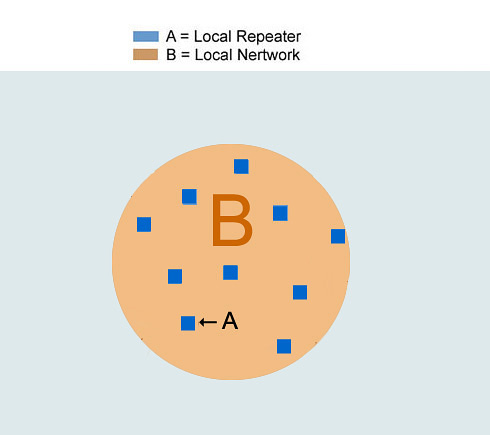 |
The c-Bridge
So how is this all this magic performed. It's called a c-Bridge (developed for Motorola by Rayfield Communications), and is the heart of the network. It's an IP based platform used for linking multiple repeaters to a given network.
As a c-Bridge connects the repeaters in a local group network, it can also interconnect other c-Bridges. Below illustrates how a master c-Bridge functions.
Relax... This is for information only, so you understand a little about how this all ties together.
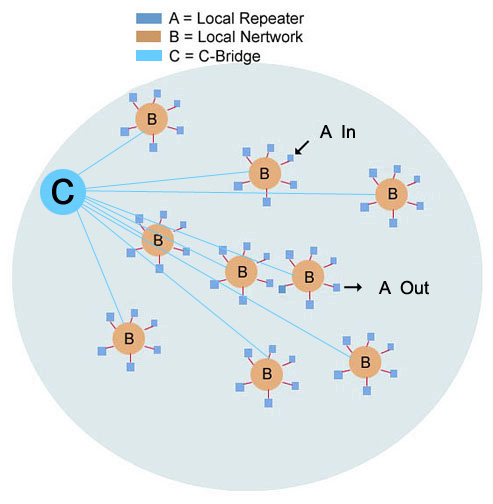 |
Talk Groups
Now on to the next level. As shown above, there are master c-Bridges that interconnect nationwide and worldwide. When a talk group is selected, your call is routed to its destination in much the same fashion as an internet search. Instead of a domain name, DMR identifies the specific destination as a Talk Group.
These talk groups are pre-assigned and coordinated by organizations such as DMR-MARC. These talk groups fall into several categories.
State Groups - This is usually your state and surrounding states. You do not need to be located in the state to use a state group, but it must be available in your repeater's active TG list. It serves as a meeting place for those in your general area.
Regional Groups - This is group of states or specific region of the country. For example, Mid-Atlantic or South West.
Nationwide, Worldwide and Continental Groups - Sometimes referred to as calling channels. Please use with courtesy. These TGs links all repeaters nationwide. Although it is not a requirement for use, consider moving to a TAC channel or state TG for long conversations.
TAC channels - These are the DMR equivalent to '52 simplex'. The most common are TGs 310, 311, 312. You will find several Nets and social groups on these channels.
Available Network Channels
The repeater owner and network administrator have the ability to assign the available channels to the repeater. With over 800 TGs available, there are approx 30 channels assigned to the average repeater.
A sample list may look like this... HERE.
Color Codes
The digital Color Code (CC) has nothing to do with a color. Compare it to a CTCSS or DCS code. Its function is to prevent the repeater from keying if there should be two repeaters with overlapping coverage areas. The proper CC is required for access and is assigned by the repeater's owner.
Talk Group Activation
There are two types of Talk Group activation. As shown in the Sample list, certain channels are active full time, and others require PTT activation. When a channel is activated via PTT, it remains active for a predetermined length of time after your the last transmission, normally around 5 minutes. Then the time slot is released back for open use. If you are in a round table conversation, you will need to press the PTT to bring your radio active again.
The two local TGs are normally active full time for monitoring purposes.
DMR-MARC and Brandmeister

The DMR-MARC network was developed many years ago by the Motorola Amateur Radio Club, and has served as the benchmark for DMR repeaters.
Years later, the Brandmeister network was developed in Europe. Although their roots are totally different, they are much like two pine trees planted side by side. As time evolves, more of the talk groups are becoming common to both.
Hot Spots
A Hotspot is a unit that attaches directly to your internet router that gives you access to the Brandmeister network. These are used mainly where there is no access to a local DMR repeater. Further discussion regarding hotspots can be found HERE.
Because hot spots bypass the need for a repeater, their main drawback is their inability to connect to a nearby repeater directly. As they require a direct internet connection, mobile use and portability requires a bit of extra hardware.
Conclusion
I hope this helped explain some of the terminology and bumped your comfort level up a notch or two. I'll see you on DMR.
|
|
|



